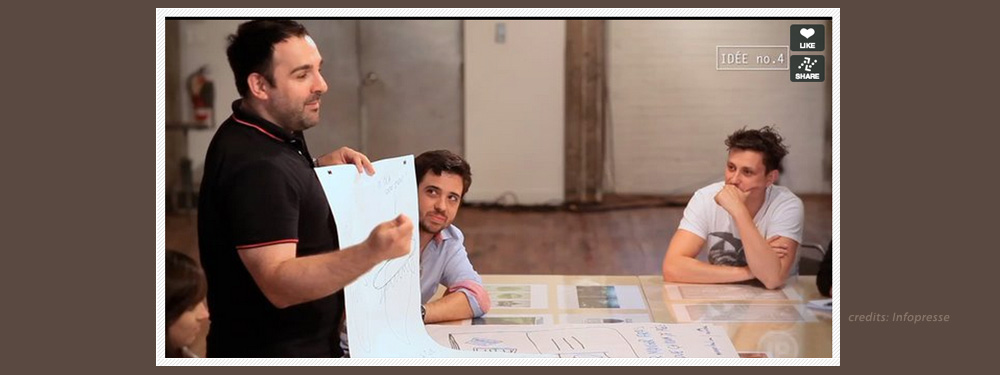Watching La Grande Virée (not online anymore), a Web series produced by Infopresse in collaboration with Cogeco, made me think of how we could recycle the concept to explore new ways to work on projects.
To give you a little bit of background, La Grande Virée is an experiment where 14 advertising professionals — originally split into two teams — had to create and produce a new campaign for a non-profit organization. They have 2 days to do, from start to finish. The campaign will then be published on the various media platforms of Cogeco.
As I started watching the 6 currently available episodes of La Grande Virée, my initial thought was that a business could reproduce the concept of this Web series to explain what they do their clients and prospects. A business could use it to demonstrate their expertise. Seeing in action how your team members execute a mandate could educate your prospective clients and will reveal more about your culture and skills than reading your Web site.
A comment that was repeated over and over by the participants was how the time constraints forced them to work differently. Then, it hit me. The biggest opportunity of recycling this Web series concept is in reinventing the workflow. If you have to do a complete project in 2 days, you have no choice but to collaborate and to eliminate waste. In fact, the 14 participants recognized it. Instead of competing as two teams like the series was original conceived by Infopresse, they decided that they must work as one big team. They split in smaller groups to perform their tasks but at critical moments for the project, they meet and agree on the best approach(es) to successfully complete the project in time.
Food for thought
Breaking the silos and old habits are not easy for many businesses. My approach, when it comes to a disruptive idea, has always been to start with the converted. Ask a group of employees who believe in the benefits of breaking down silos if they want to participate in an intensive workshop where they would experiment on how to work together in projects. Once the team developed a new methodology that sounds promising, see how it works in the real life with suitable clients. Make sure that your clients know what you are doing. If things go well, they will become your ambassadors. Otherwise, you will have learned something as a business. And you could run new experiments to try to find the solution.
As for the rest of your employees, I bet that many will want to join in the day when clients will start to request the more collaborative team.
+ photo credits: La Grande Idée par Infopresse

